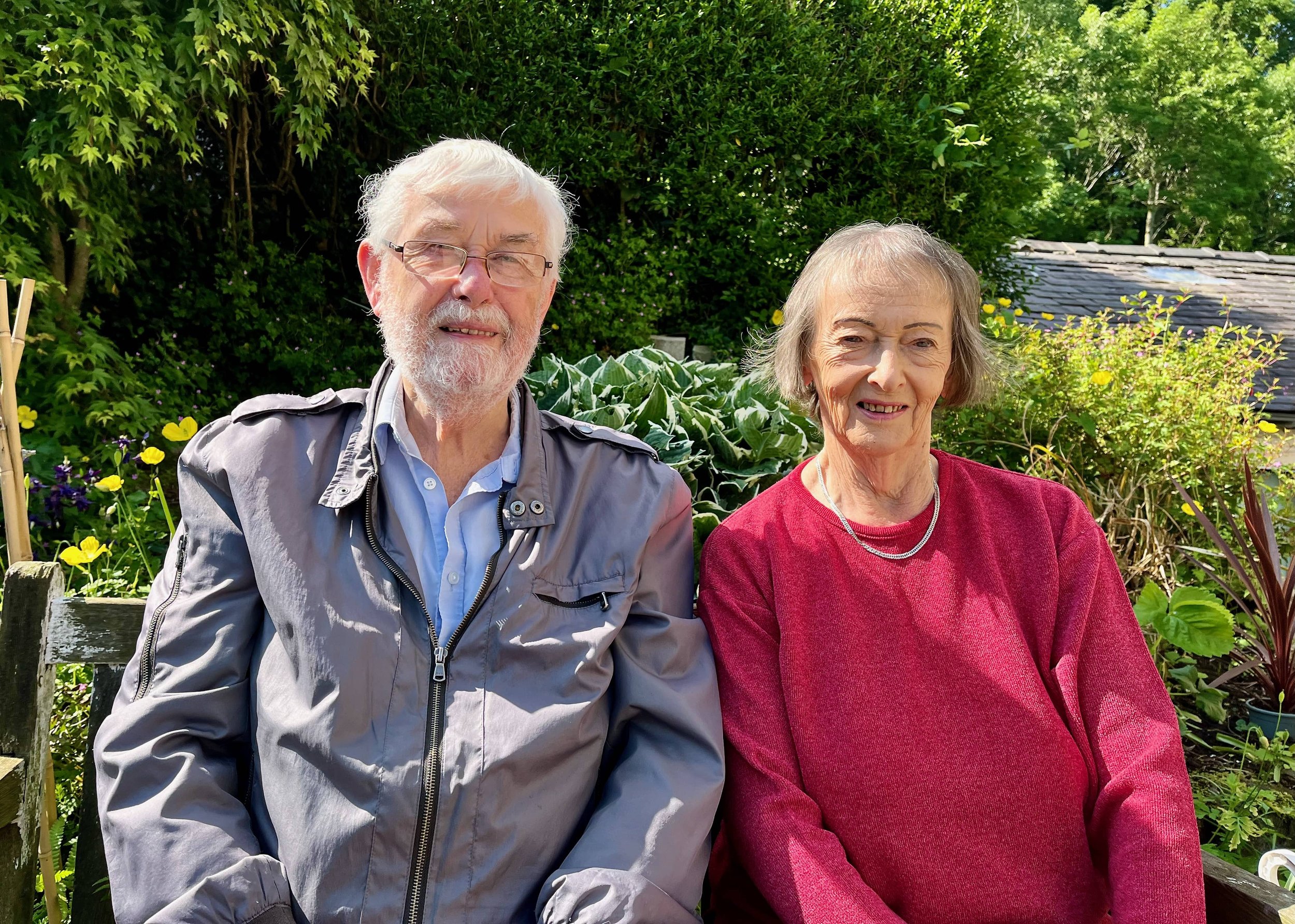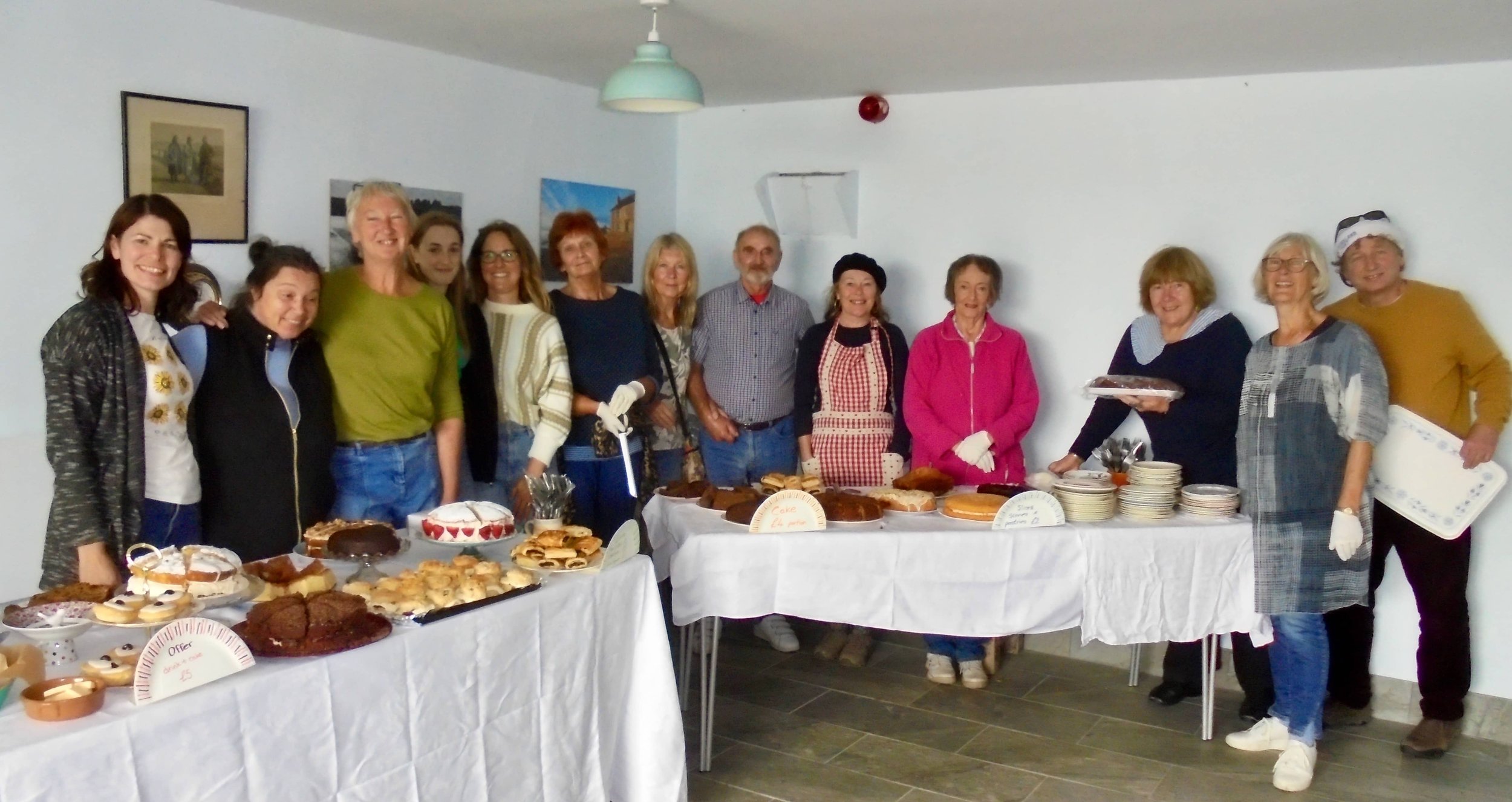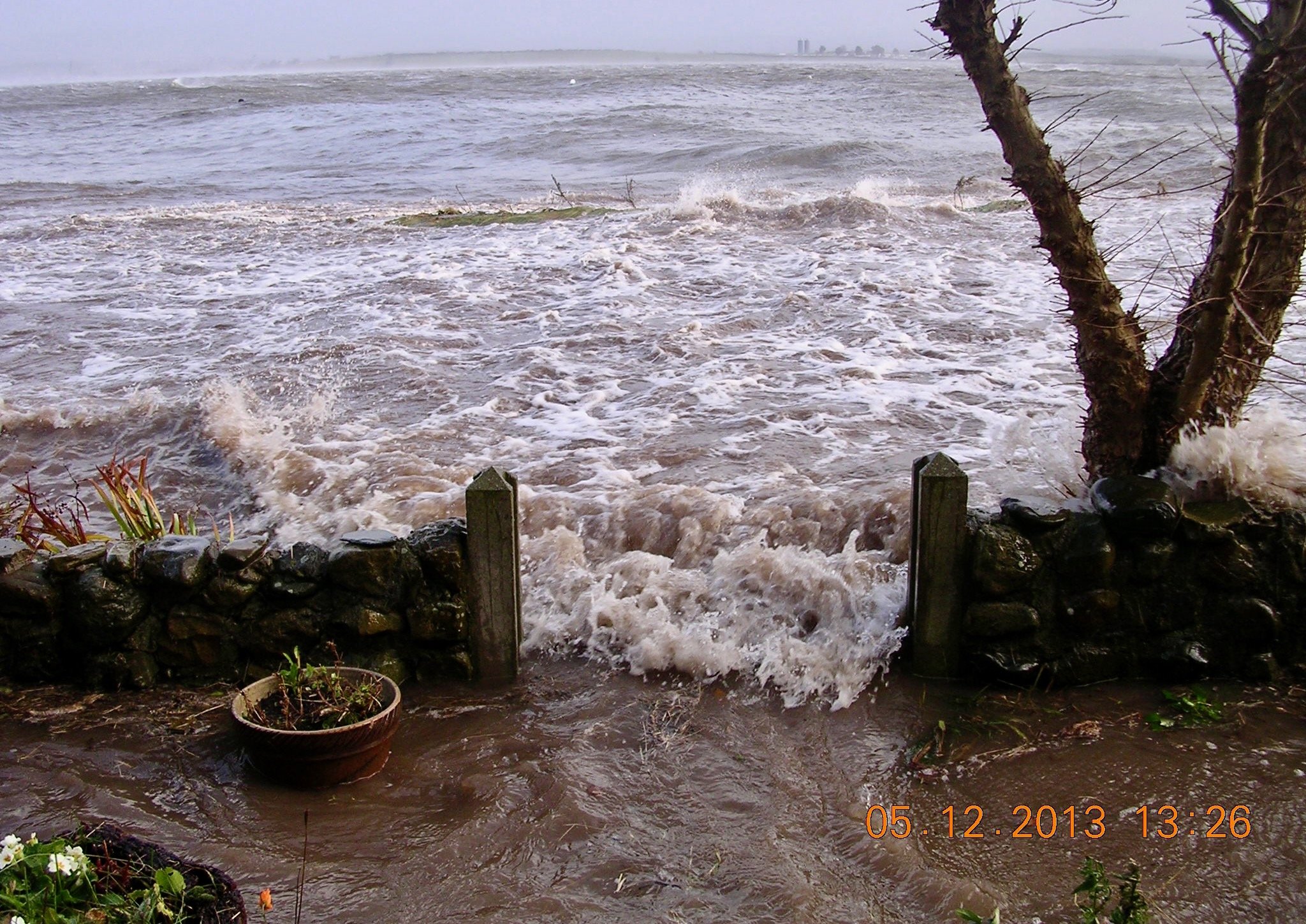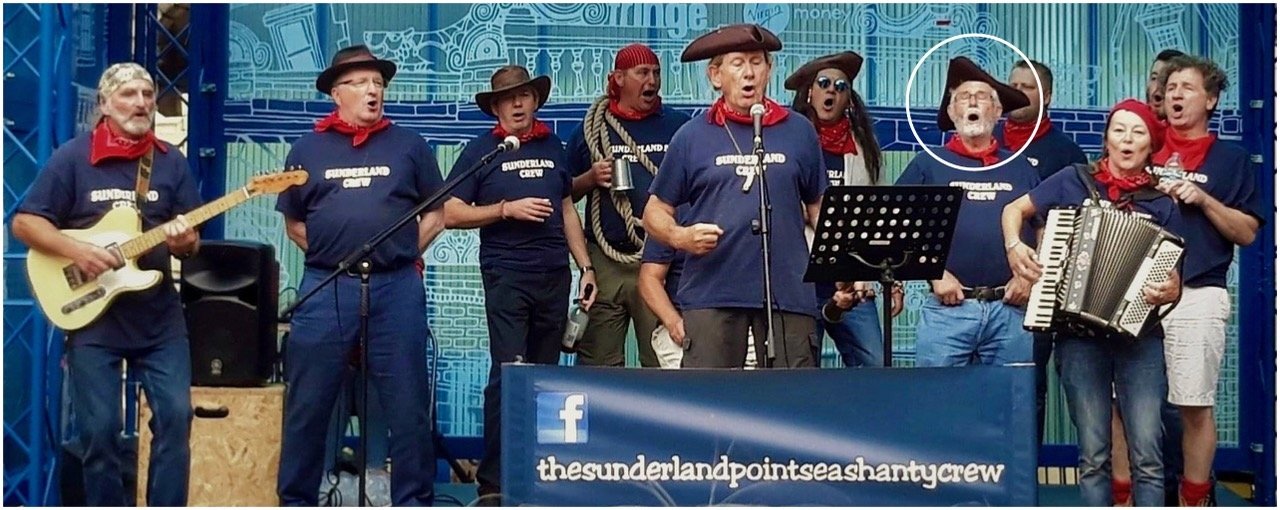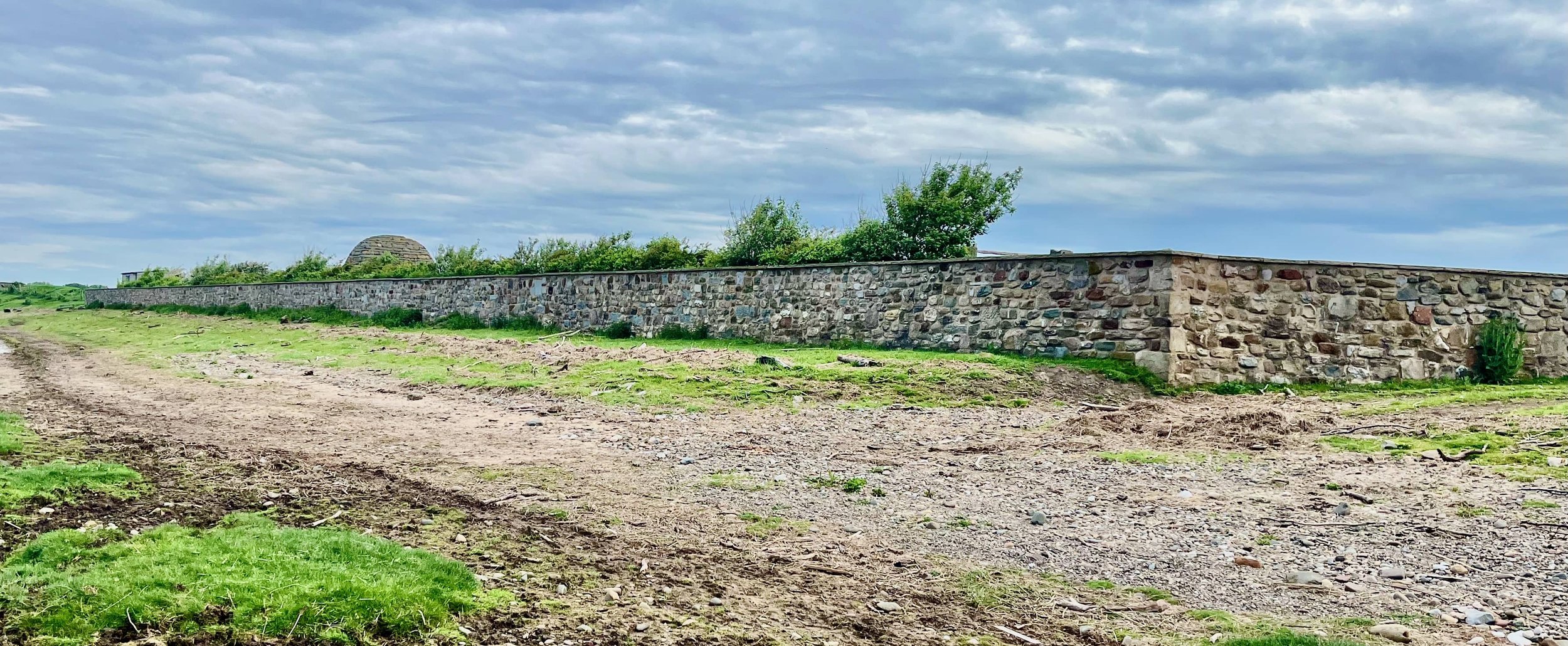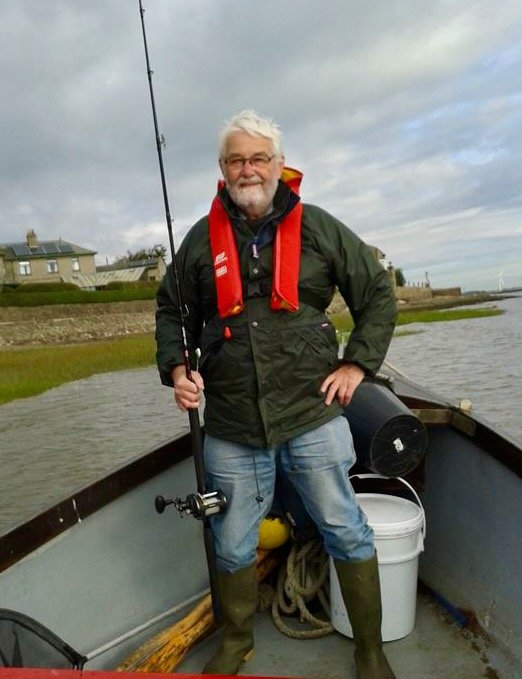Leaving Sunderland Point
Long-time residents Dave and Pam Clarke left the Point for Overton at the end of January 2024. Both made substantial contributions to the community. Dave was the inaugural Chair of the Community Association in 2007 and the organising mastermind behind the public toilets - always kept in excellent condition for visitors. He was also for many years Clerk to the Parish Council. Dave kindly agreed to our request write an article on living at SP.
Pam and Dave Clarke in the garden of their new home in Overton May 2024
Pam and I came to live on the Point in the millennium year 2000. We were not complete strangers having emigrated from Preston to Overton in the scorching summer of 1976. But still, moving to Sunderland Point, separated from the mainland by a muddy tidal road, seemed like a big adventure.
Our two boys were grown up and independent, retirement, or at least partial retirement, beckoned. While in Overton we had contact with folk from the Point so dismissed tales of strange goings on and arcane initiation rituals. We looked forward to long walks along the beach, evening drinks on the green enjoying idyllic views over the Lune estuary and the opportunity to relax in the village that time forgot.
Time had forgotten to connect to mains gas and the internet but the basics, electricity, running water and the telephone were there. Shades of the 18th century remained - unmade roads, solid fuel fires, and no mains drainage. That didn’t worry us as some of our previous homes had lacked a full set of mod-cons.
There were other concerns like planning for off-Point commitments such as work, tennis, and bowling. The twice daily tide proved easier as the height of high water is lower in the morning and early evening - when going to and returning from work - than it is at midday and midnight. An early start was sometimes necessary and the occasional evening delays were made palatable by a choice of two Overton pubs.
Integrating with Sunny Pointers was easy, the community was welcoming and friendly. Partial isolation from the mainland led the villagers to develop their own amusements. Second Terrace housed the Reading Room - two rooms which served as a social hub equipped with a billiard table, a small library, and a rudimentary kitchen - whist drives, concerts, film shows, talks, community meetings, and parties with homemade cakes all took place here.
Cooks and Cakes in the Reading Room 2023: Photo Dave Clarke
The amazing Lune estuary provided a living for some residents as well as others from Overton and the surrounding area. This was principally fishing for salmon, sea trout and other edible species while in season and shrimping. The two main salmon fishing techniques are Whammelling in which a net is deployed from an open boat and Haaf netting. This is an ancient technique, introduced by the Vikings, in which the fisher stands up to chest deep in the water holding a horizontal net against the flow of the tide.
Philip Smith Haafing in the Lune: Photo Alan Smith.
At the Point wood is an important winter fuel and many residents scour the beach for driftwood which the river gods thoughtfully provide in abundance, particularly after a storm when maybe their consciences are pricked.
We discovered that the need for winter fuel and other exigencies of Point life are served by three items of equipment that no Sunderland Pointer should be without, a boat, a chainsaw, and a tractor or at least a quad bike. The need for boats and chainsaws is obvious. A quad bike will help with boat management, fishing and wood gathering, but a tractor opens up the ability to be a good Samaritan when visitors and sometimes neighbours get their cars stuck in the Sunny Point mud. Sadly, we never graduated to a quad bike or tractor.
In November 1977 a violent storm ravaged Morecambe Bay and Sunderland Point was flooded. The sea breached the flimsy defences on the West Shore and rushed across the fields to flood the back gardens of Second Terrace. The raging waters in the estuary assaulted the houses on both First and Second Terraces causing much damage. Overton itself had a lucky escape.
Removing The Lady Margaret washed onto the road in 2008: Photo Dave Clarke
This event obliged the community to consider how best to beef up flood defences. The solution adopted by many was to acquire door barriers. A metal frame covered in stretchy waterproof material which could be expanded to jam across a doorway to provide a reasonably strong water-resistant barrier.
During our early years we experienced a serious storm and used the door barrier. It was not a precise fit and as the water rose to about a foot above floor level it began to seep in. We mopped it up with towels. It was a scary experience standing at the door in the middle of the night clad in waterproofs and waders listening to the howling gale and watching the massive waves crashing onto the green in front of the house. The ordeal continued long after predicted high water time but eventually the tide began to ebb, and we were able to relax a bit.
Flooding at number 3 Cotton Tree Barn December 2013: Photo Dave Clarke
In the morning, we were greeted with a scene of devastation. The green was covered in stones and other debris, it seemed as if the sea had thrown the entire beach up onto the Terrace. The community set to and chucked the rocks back onto the beach. It was hard work and took a couple of days.
During the 1990s the sea defences protecting Overton were improved but nothing was done to protect Sunderland Point. Subsequently the Environment Agency produced a strategic plan for coastal defences, the section for the Fylde coast and Morecambe Bay was entitled Shoreline Management Plan 2 (SMP2). The plan set an estimated value of properties likely to be totally destroyed by storm or rising sea level against the cost of effective defences. Sunny Point with its 30 or so properties directly at risk and 60 or so souls did not pass the test. Other issues like the long-term viability of the properties above the danger line, or the cost of new infrastructure to serve them did not feature in the equation, nor did the fate of listed buildings or the Sunderland Point Conservation Area.
Pointers felt neglected and turned to self-help. The Sunderland Point Community Association (SPCA) was set up. Membership included all adult residents and anyone who owned property on the Point. The inaugural meeting took place on 27th July 2007. A grant was obtained from Defra (Department for Environment, Food and Rural Affairs) to fund the installation of robust metal flood barriers to all at risk properties.
The flood barriers and numbers 18 and 19
In 2013 the Point end was encased in rock armour to arrest erosion which had been eating it away at the rate of about a metre every year.
Rock armour at the Point End
Over the last 20 years or so, there has been a gradual change in the Sunny Point community. Fewer people make a living from the sea, there are less families with young children - but there are more retired people, often long-term residents, as well as newcomers. Some Sunderland Point children, after living and working away, have returned to their ancestral homes. Maybe this will become a trend.
The community is perhaps more diverse than in the past. It has always included artists, musicians, and entertainers but in recent years it has welcomed others. There is a well-established sea shanty group - “The Sunderland Crew”, a folk duo “Lunetide”, and a magician.
Sunderland Point Sea Shanty Crew – Dave Clarke, singing with gusto is circled: Courtesy Scottie Wilson
Some of the community’s projects have been long in gestation and proved controversial. A proposal to repair and improve the sea defences on the West Shore to include a bird hide (and later the Horizon Line Chamber) involved major building work which divided the community. The work, much of it done by SP volunteers, was completed in early 2020. There is still some disappointment with the outcome.
Replacement sea wall on the West Shore
In the last decade of the 19th century a mission church, designed by famed Lancaster architects Austin and Paley, was built at Sunderland Point to serve the community of farmers, fishermen and sailors. At that time there was a movement for the construction of small places of worship in remote coastal communities by the Church of England (C of E) to expand its mission. The vicar of Overton St Helen’s Church and a group of trustees appointed by the vicar were responsible for the management of the Mission Church which, apart from Sunday services, could involve other community activities and events.
In recent decades congregations for services at the Mission Church diminished to a point where it became impossible to fund the maintenance of the building and regular services stopped. Meanwhile a long-held ambition by some Pointers to secure the use of the building for a wider range of community purposes looked to be within reach. The C of E, The Diocese, the vicar, and Parochial Church Council agreed to transfer the ownership of the building to the Trustees of Sunderland Point Mission Heritage Centre, the Mission Church’s grand new title.
But all was not plain sailing, the building had by now achieved grade II listed status. The trustees’ plans involved works which required listed building planning consent and the community was divided over the extent of and necessity for the proposed works. Eventually, with some compromises, planning consent was obtained. The next stage is to get cracking on the work. Not everyone is happy.
In 2010 the austerity years arrived, money was tight, and Lancaster City Council decided it could not afford to maintain the public toilets at the Point. Overton Parish Council (OPC) and the SPCA hatched a plan to save the toilets from closure. The Sunny Pointers would attend to the day-to-day work of cleaning the toilets and OPC would shoulder the repair and maintenance costs. The City Council, to its credit, helped with an annual contribution towards these costs. Since 2010 a heroic band of dedicated SP volunteers has looked after the toilets. Visitors have made favourable comments on the high standard of the volunteers’ work. Everyone is happy about this outcome.
Sunderland Point gets many visitors from all over the country. Apart from the toilets and the “Tramper” (for use by visitors with mobility problems) there are no facilities. No pubs or tea shops, and no amusements. However, there are many interesting buildings, fabulous estuarine views, great walks, and Sambo’s Grave. The Grave is a place of pilgrimage for many, a place to stand and contemplate, for a while the malign consequences of injustice, prejudice, and greed.
Pam and I are from the Lake District and are used to the inconvenience visitors often cause to locals. But in the Lakes and most other tourist areas visitors make vital contributions to the local economy. The Point gains no economic benefit from visitors to offset any inconvenience which they may cause. This variation from the normal visitor/local dynamic creates a sort of subliminal tension in Sunny Pointers for which there is, perhaps, no prospect of relief.
Dave and Pam’s boat 2013: Photo Dave Clarke
Pam and I have been very happy at Sunderland Point, we hope that in our 23 years sojourn we have contributed something to the community. Leaving is a wrench but we’ll be back from time to time to continue old friendships.
Dave Clarke
2024.
Dave with his new fishing rod on his (first) retirement in 2017 - funded by a gift from the Parish Council: Photo Alan Ward.
